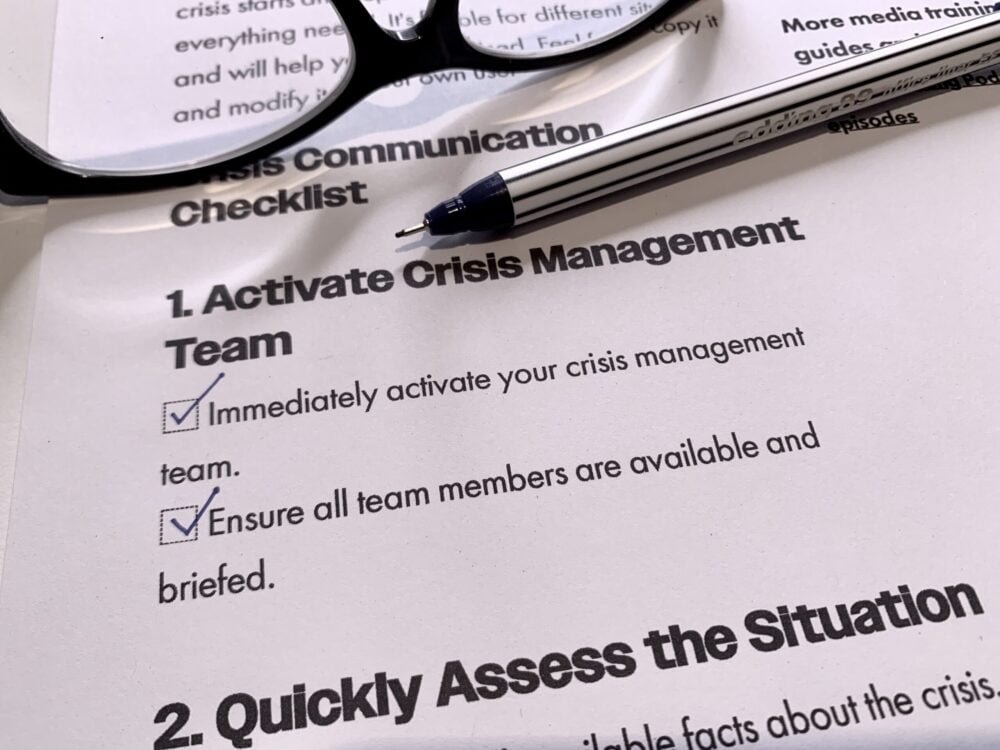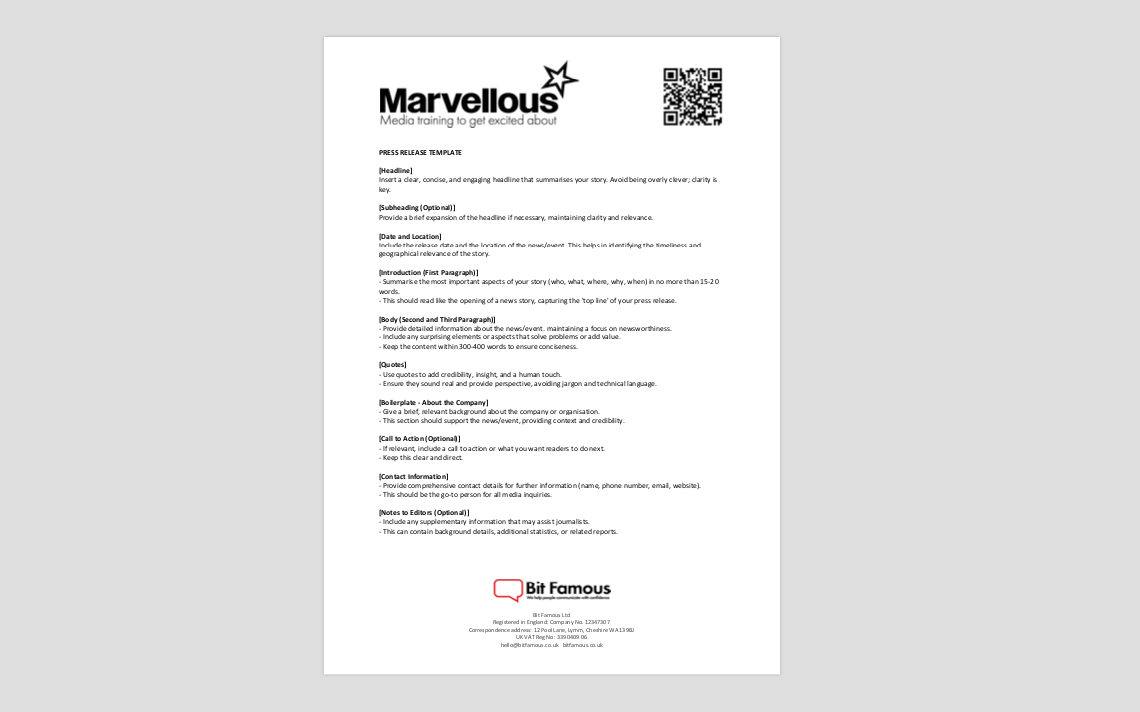Crisis Communication Checklist. This checklist is a simple tool to help you communicate well during a crisis. It lists the important steps to follow. Use it when a crisis starts and keep using it to make sure you cover everything needed. It's flexible for different situations and will help you stay organised. Feel free to copy it and modify it for your own use.
Crisis communication checklist
1. Activate crisis management team
⬚ Immediately activate your crisis management team.
⬚ Ensure all team members are available and briefed.
2. Quickly assess the situation
⬚ Quickly gather all available facts about the crisis.
⬚ Assess the potential impact on stakeholders.
⬚ If there are vicitms gather names and contact families.
⬚ Liaise with emergency services and healthcare providers if they are involved.
3. Issue holding statement
⬚ Release an initial holding statement to acknowledge the crisis.
⬚ Be honest, truthful and straightforward about what you do and don't know.
⬚ Convey empathy and concern, especially if there are victims.
4. Designate spokesperson
⬚ Confirm the designated spokesperson for media interactions.
⬚ Ensure the spokesperson is briefed and prepared.
5. Communicate with key stakeholders
⬚ Inform employees, partners, and key stakeholders about the situation.
⬚ Provide them with guidance on how to communicate about the crisis.
6. Engage with media
⬚ Respond to media inquiries promptly.
⬚ Provide clear, factual, and consistent information.
7. Monitor media and social media
⬚ Keep track of media reports and social media discussions.
⬚ Adjust your communication strategy based on public sentiment.
8. Update public regularly
⬚ Provide regular updates to the public and media.
⬚ Be transparent about what is known, what is being done, and what is still uncertain.
9. Show empathy and concern
⬚ Continuously express concern and empathy, particularly if there are injuries or fatalities.
⬚ Ensure communication is compassionate and considerate.
10. Detail actions taken
⬚ Clearly communicate the actions being taken in response to the crisis.
⬚ Include specific steps for resolution and prevention.
11. Provide reassurance
⬚ Reassure stakeholders and the public that measures are in place to manage the situation.
⬚ Share examples of effective actions taken.
12. Review and adjust communications as needed
⬚ Continuously review the effectiveness of your communication.
⬚ Be prepared to adjust strategies based on feedback and developments.
13. Document responses and feedback
⬚ Keep a record of all communications issued and feedback received.
⬚ Use this information for post-crisis analysis.
14. Post-crisis review
⬚ Conduct a thorough review of the crisis management process.
⬚ Identify lessons learned and areas for improvement.
15. Update crisis communication plan
⬚ Update your crisis communication plan based on the insights gained.
⬚ Ensure continuous improvement in crisis readiness.
More media training guides and podcasts

Mastering profile interviews in the media

Media appearances, the unwritten rules

Public apologies, how to say sorry in the media and mean it

Why off-the-record journalism is riskier than you think

What are key messages in the media?

Give your leader feedback after a media interview

Why avoid corporate speak and office jargon in media interviews?

Media interview preparation checklist

How to create a founders’ origin story

How to answer hostile or negative questions from a journalist

How to be authentic in a media interview

Crisis Management: How to write a holding statement

Crisis communications checklist

How to create a successful media soundbite

Mastering profile interviews in the media

Media appearances, the unwritten rules

Public apologies, how to say sorry in the media and mean it

Why off-the-record journalism is riskier than you think

What are key messages in the media?

Give your leader feedback after a media interview

Why avoid corporate speak and office jargon in media interviews?

Media interview preparation checklist

How to create a founders’ origin story

How to answer hostile or negative questions from a journalist

How to be authentic in a media interview

Crisis Management: How to write a holding statement

Crisis communications checklist

How to create a successful media soundbite

Free press release template (Word)

How do you handle a media question you don’t want to answer?

How to use #JournoRequest to get media attention for my business

How do I prepare for a TV interview online using Zoom, Teams or Skype?

How to appear on a business podcast

How to handle a difficult media interview

How to get featured in the media

How does the news work?
How can I develop a relationship with a journalist?

Manchester Media Training
How can I incorporate my organisation’s values or mission into a TV interview?
How can I use data or statistics effectively in a media interview?
How can I make my TV interview more engaging for the audience?
How do I research a journalist or interviewer?
How do I look good in a TV interview?

How to decline a TV interview request
Can I have the TV interview questions in advance?
What makes a good TV interview?


